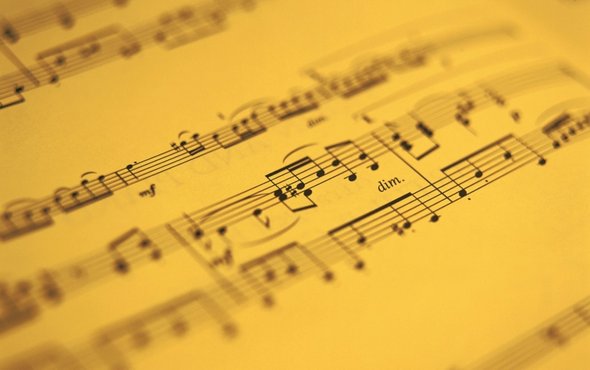(单词翻译:单击)
听力文本
This is Scientific American — 60-Second Science. I'm Christopher Intagliata.
The word "duet" usually refers to a song. But in a sense, every human conversation is a duet—with unwritten rules about when participants take their turns to speak. You can hear how awkward it sounds when the rules are broken: as with the slight delay between this ABC News host and astronaut Rick Mastracchio. ("Okay, so give us an idea of what you guys go through on a daily basis. —Long pause— Okay, well we wake up fairly early...")
That long pause? Pretty uncomfortable, especially if you're not talking to someone on the space station. We humans first get a feel for this back-and-forth rhythm when we're still babbling babies. And, it turns out, same goes for songbirds in learning their duets.
"What you should hear is something like the whistle, (whistle sound) and then something like (trill sound) and then (trill sound). Yeah I'm not very good at doing the song, but..."
(songbird duet clip) "It seems that only one bird is singing, that's how good they are."
Karla Rivera-Cáceres, a postdoctoral fellow at the University of Miami. She and her team recorded the formative songs of a bird called the canebrake wren, in their nests in the Costa Rican forest.

Here's the same baby bird singing just two weeks earlier. Listen for it trampling on the lines of its parent, in the second half of the duet. (poor songbird duet) Again for reference, here's the improved version, when the bird had learned to take turns. (songbird duet)
Rivera-Cáceres analyzed the progress of 13 juvenile birds, and was able to determine that the youngsters didn't just naturally mature into this ability to sing a duet. They gradually picked up their dueting skills from the adults they practiced with—a trait they share with humans, in learning their species' conversational rhythms. The study is in the journal Royal Society Open Science.
And these findings might provide a window into our own language learning, too. "Understanding songbirds has helped us understand more about how human language is acquired, and understanding the neural machinery and the genetic machinery that controls that vocal learning. It gives us the tools to explore more how these rules are processed in the brain."
No word yet on whether it may also reveal why some humans have such trouble carrying a tune.
Thanks for listening for Scientific American — 60-Second Science. I’m Christopher Intagliata.
参考译文
这里是科学美国人——60秒科学。我是克里斯托弗·因塔利亚塔。
“二重唱”这个词通常用来指歌曲。不过从某种意义上来说,人类的每一次对话都是“二重唱”,因为参与者轮流说话是不成文的规定。在这一规定被破坏时你可以听到那有多尴尬:以下是美国广播公司主持人和宇航员里克·马斯特拉基奥之间有些延迟的对话。(“好,请介绍一下你们每天是怎么过的。——长时间停顿——好,我们起床的时间相当早……”)
那段长时间的停顿?让人非常不舒服,特别是你不是在和空间站上的某个人交谈。我们人类在牙牙学语的婴儿时期,就首次感受到了这种来回交替的节奏。而且事实也表明,鸣鸟也是在雏鸟时期学习的“二重唱”。
“你应该听到的是类似哨声的叫声,(哨声)然后是是这种啼啭,之后是这种叫声。对,我并不擅长模仿鸟鸣,不过……”
(鸣鸟二重唱)“好像只有一只鸟在叫,它们的歌声非常优美。”
迈阿密大学博士后研究员卡拉·里维拉·卡塞雷斯说到。她和团队在哥斯达黎加森林中的藤丛鹪鹩巢记录了这种鸟成长期的叫声。
这是两周前唱歌的那只小鸟。来听听在二重唱后半段,它无视父母的教导所发出的叫声。(难听的鸣鸟二重唱)再来听另一个参考,下面是这只鸟在学会交替节奏后的改进版本。(鸣鸟二重唱)
里维拉·卡塞雷斯分析了13只幼鸟的进步情况,并能确定这些幼鸟不会自然产生唱出二重唱的能力。它们会逐渐从一起练习的成年鸟那里学会二重唱技能,这与人类小时候学习成人的对话节奏一样。这项研究发表在《英国皇家学会·开放科学》期刊上。
这些研究成果也可能为我们人类的语言学习提供一个窗口。“了解鸣鸟有助于我们更深入地了解人类语言的习得方式,同时了解控制声乐学习的神经机制和遗传机制。”这为我们人类提供了工具,可以进一步去探索这些规律在大脑中的加工方式。
至于这是否也能揭开一些人唱歌走调的原因,目前还不得而知。
谢谢大家收听科学美国人——60秒科学。我是克里斯托弗·因塔利亚塔。
译文为可可英语翻译,未经授权请勿转载!
重点讲解
重点讲解:
1. in a sense 从某种意义上说;
In a sense, the accent has been considered as an individual symbol.
在某种意义上,口音甚至成为了一种个性的符号。
2. go for 适用于;
Of course, this concept goes for any venture in life: talent is only ten percent of it.
当然,这一理念适用于生活中的很多事业:天资只占其中的百分之十。
3. trample on 践踏;无视;伤害;
For her own purpose, she can trample on other people's life!
为了达到目的,她不惜践踏他人的生活!
4. take turns 轮流;依次;
The doctors take turns at participating in the mobile medical team.
医生们轮流参加巡回医疗队。


